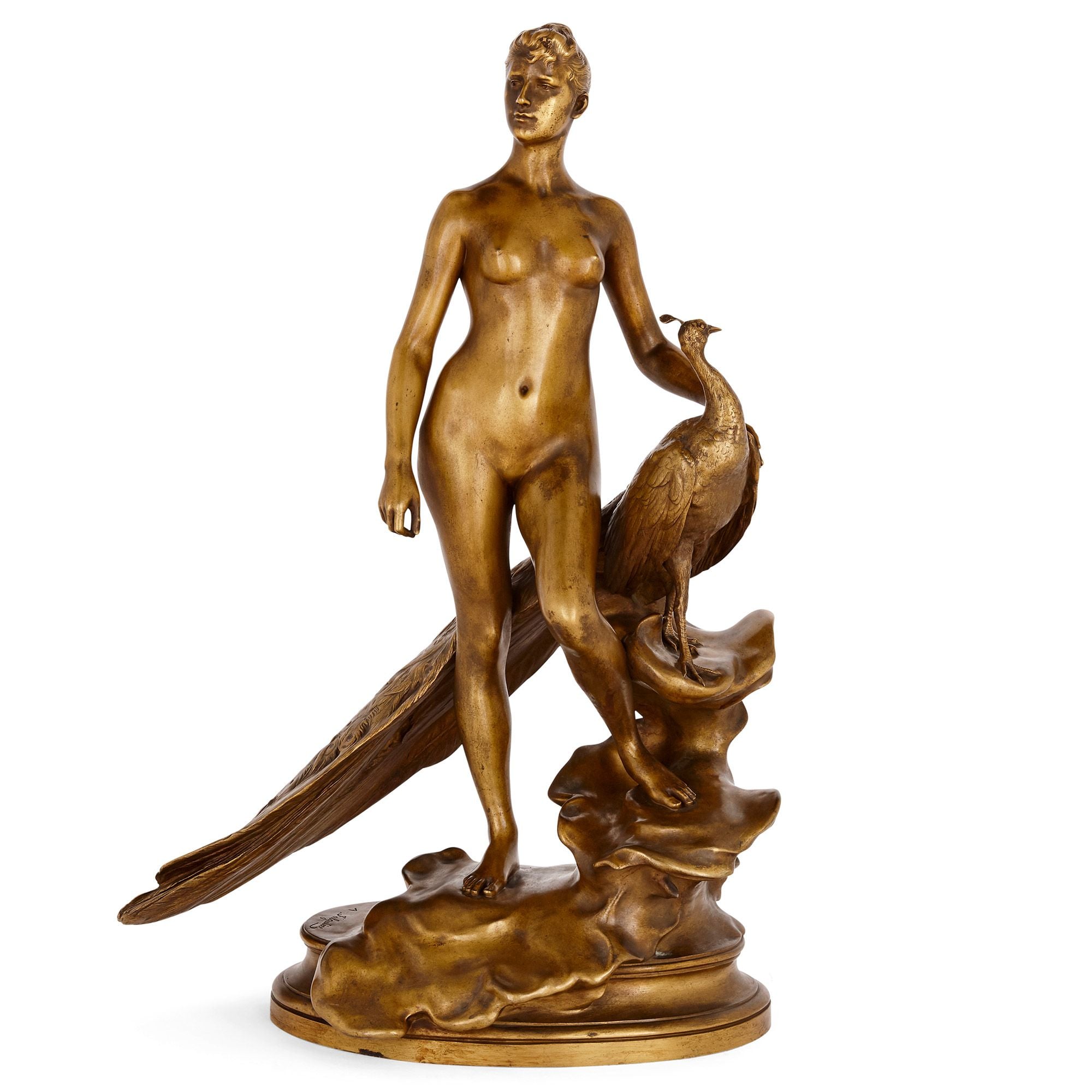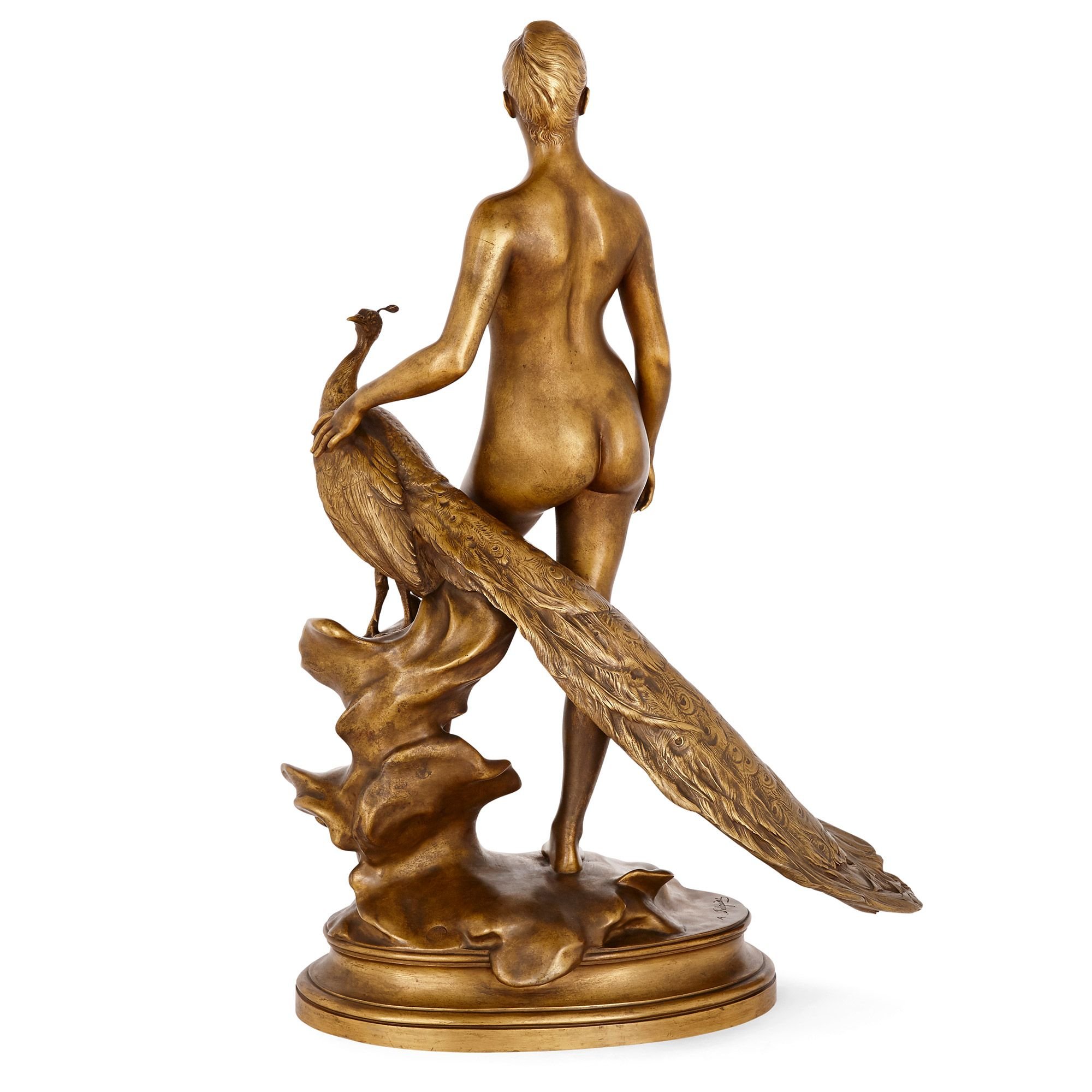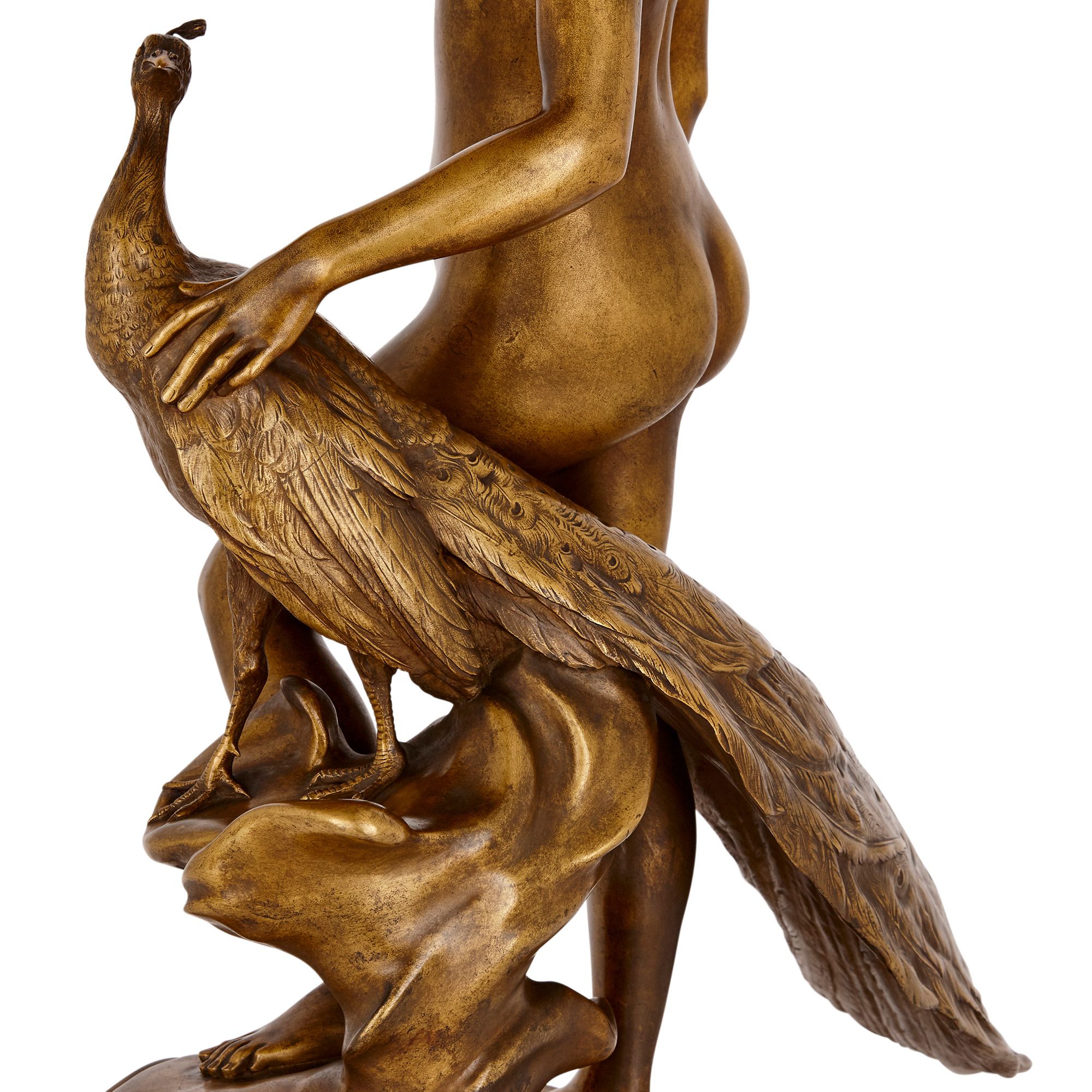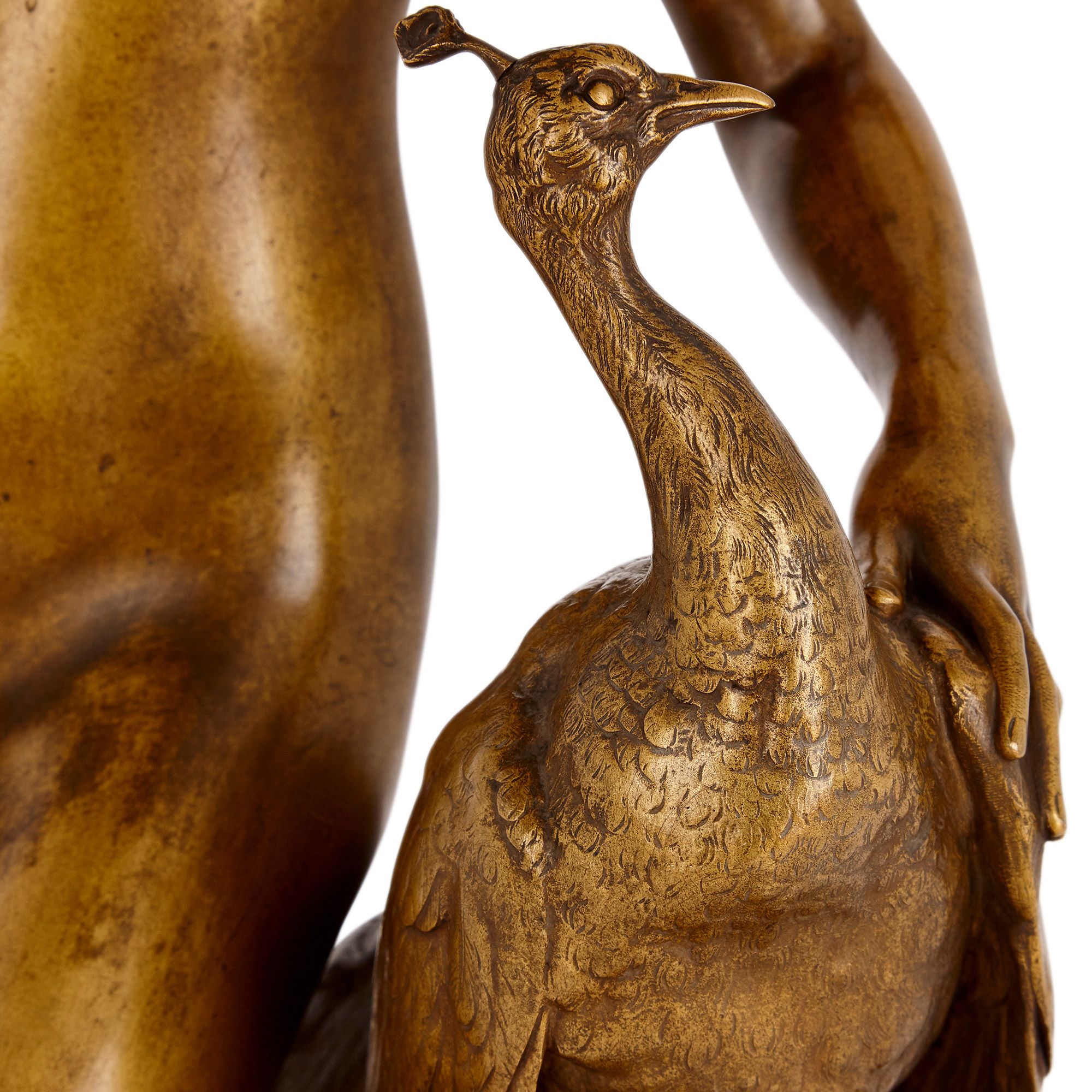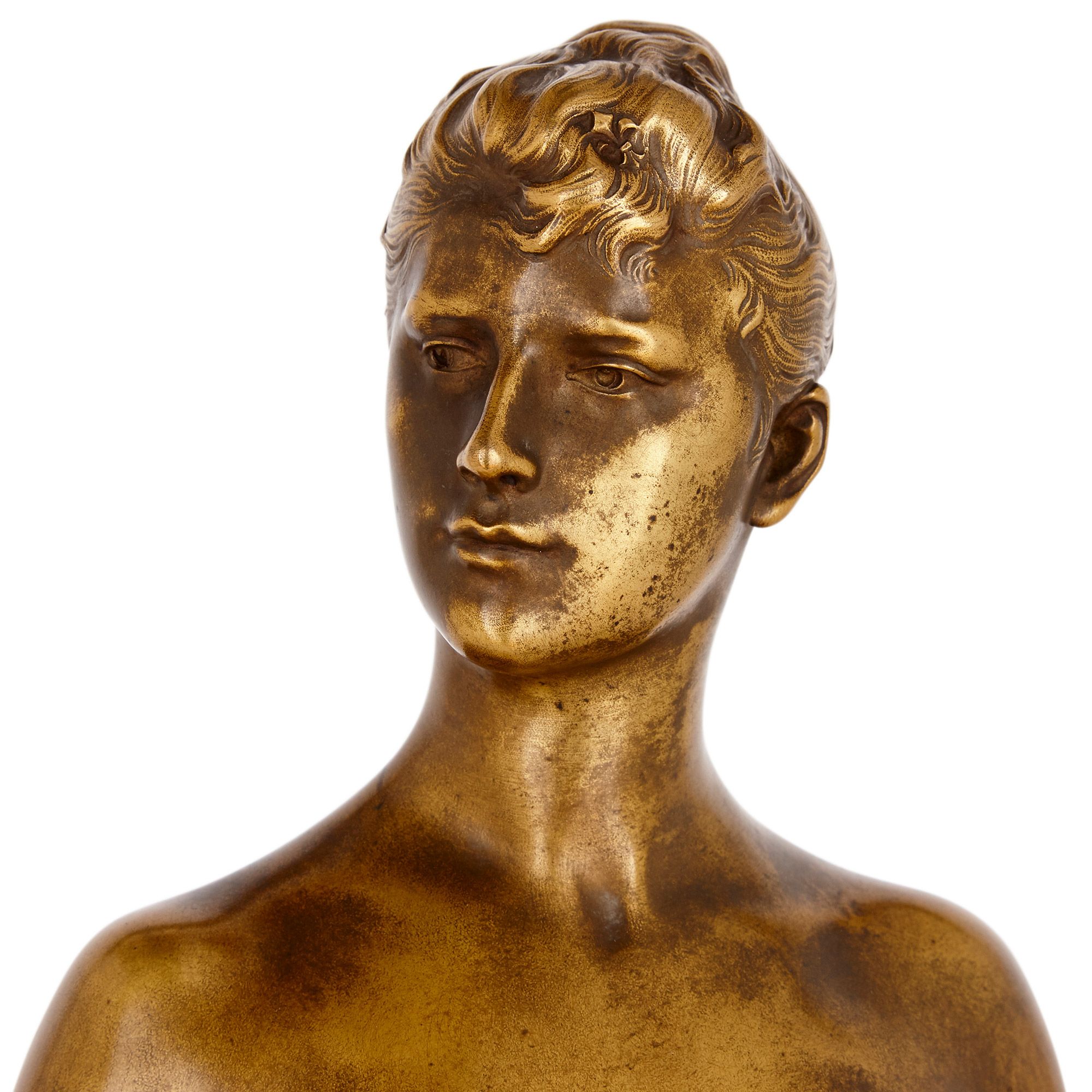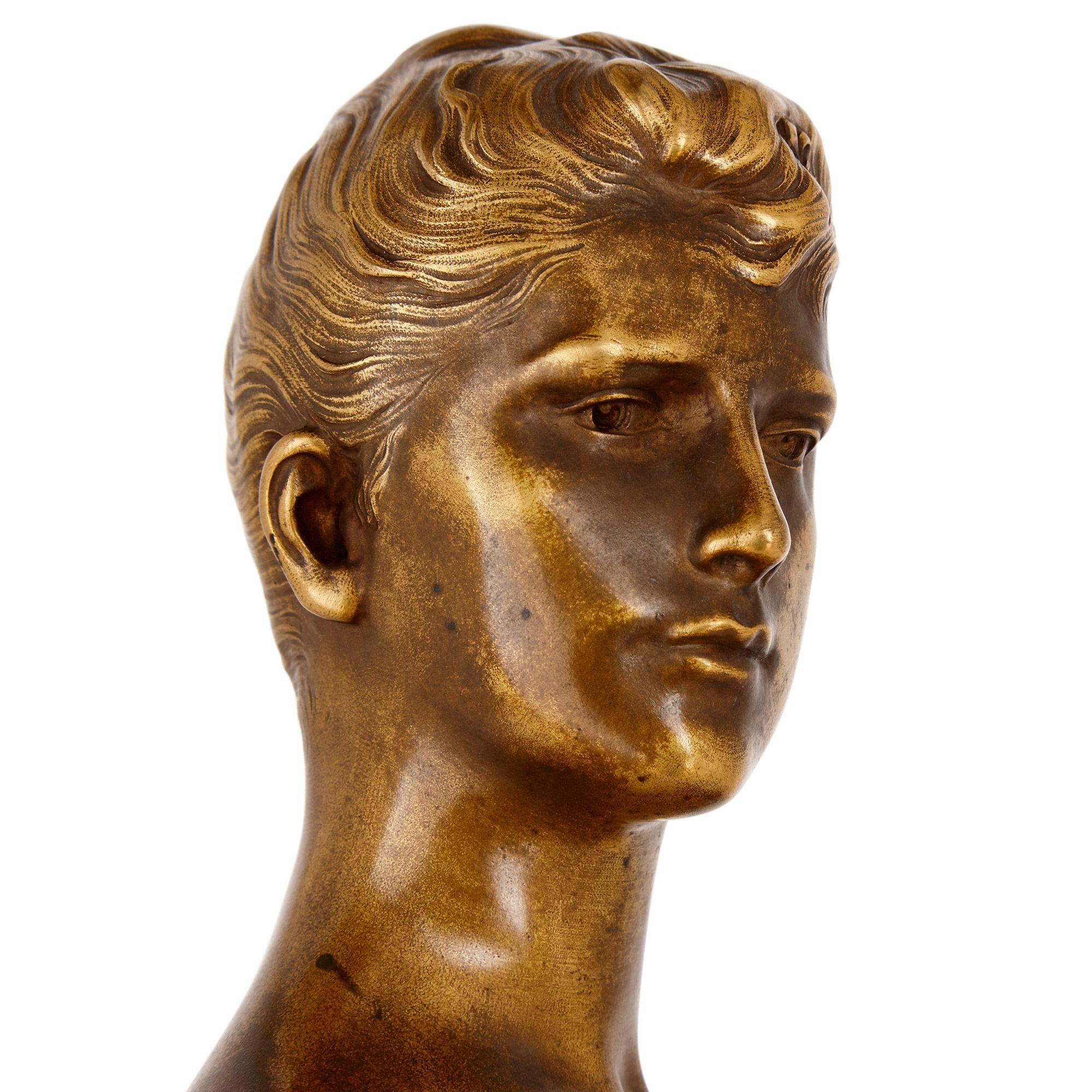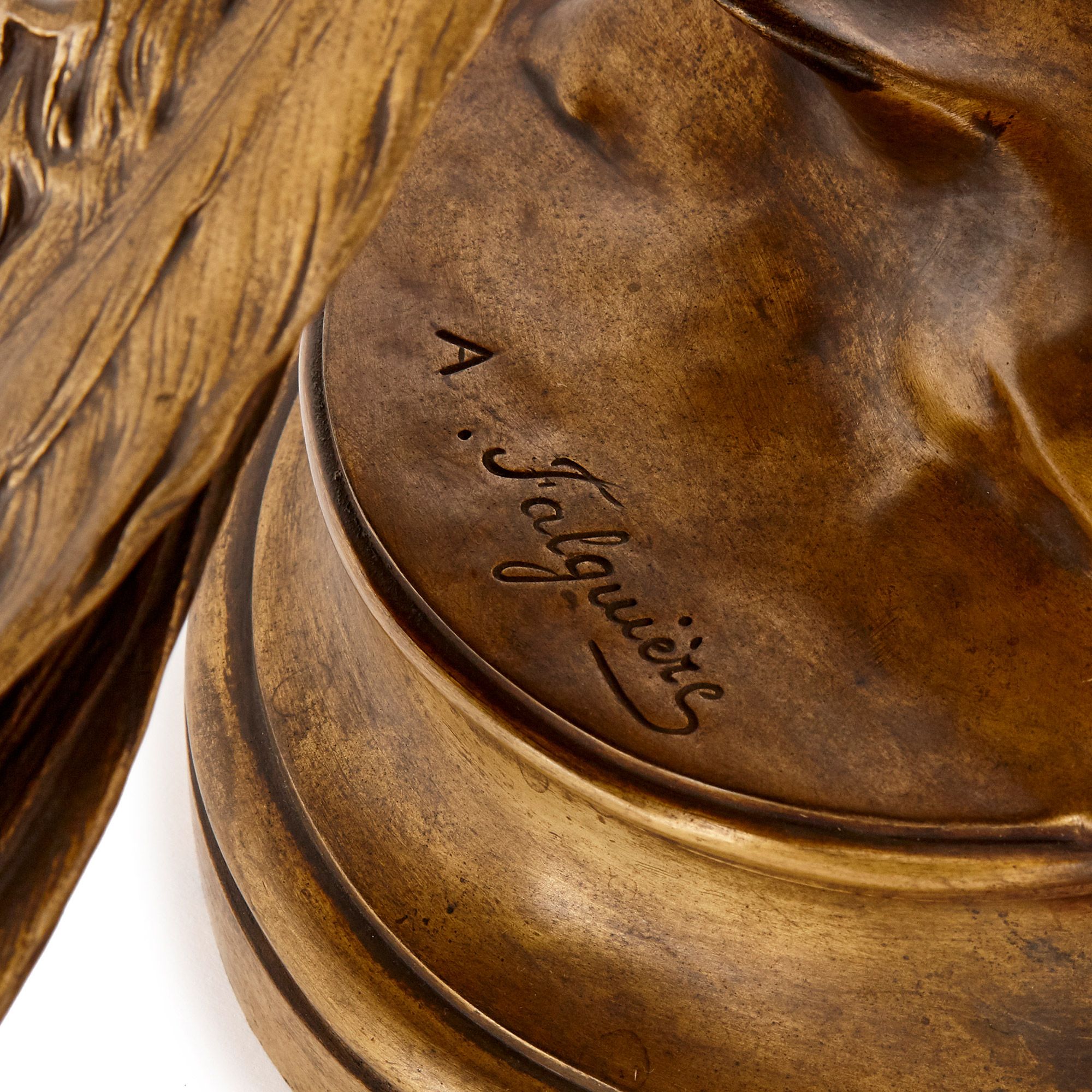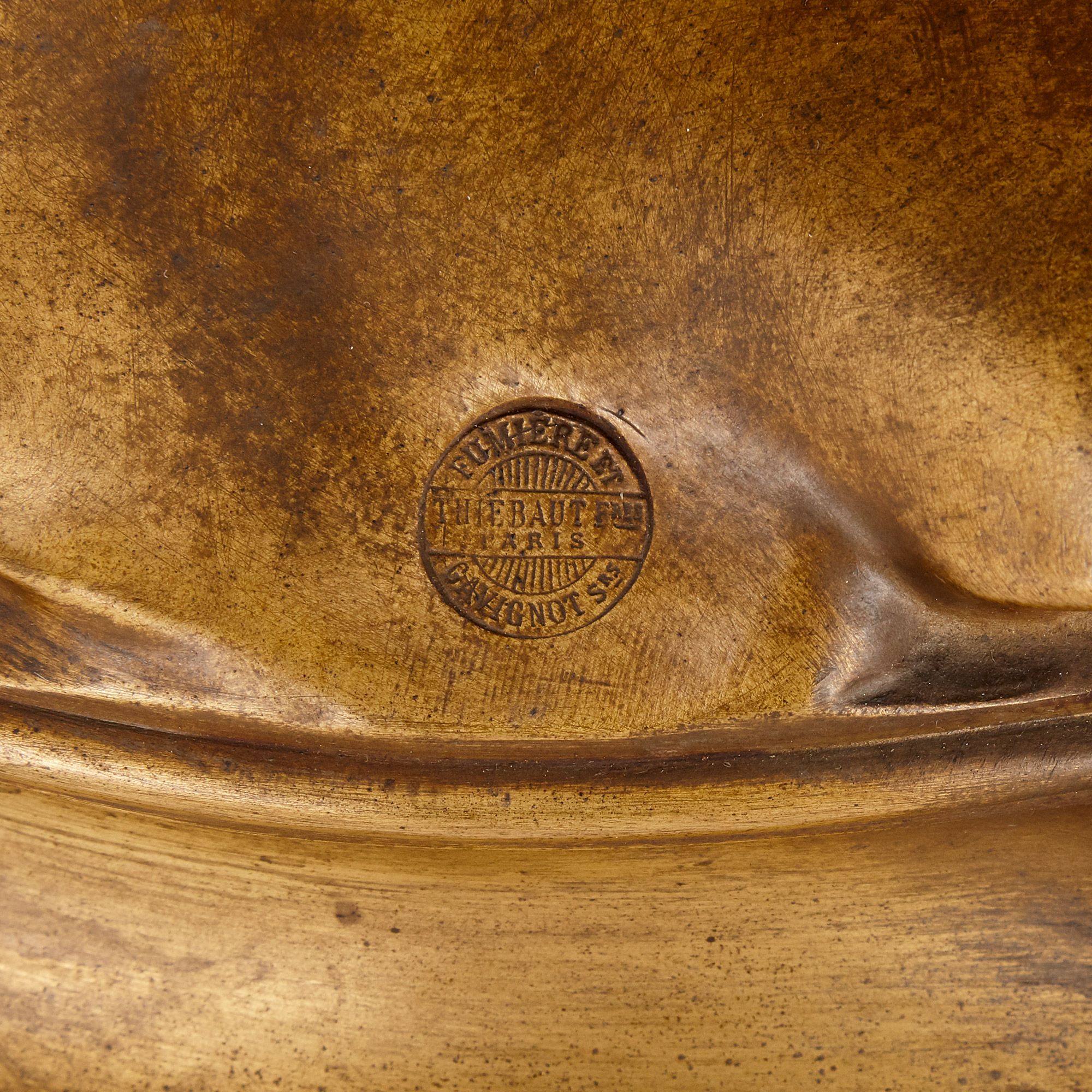This classically informed patinated bronze sculpture portrays the Roman goddess Juno—who is associated with the Greek goddess Hera, with whom this sculpture is sometimes identified. Juno, depicted full length and in the nude, stands in contrapposto, the classical stance where hips and shoulders are tilted in a naturalistic, complementary manner. Juno, who stands on a naturalistically formed integral base, is accompanied by a peacock, her sacred animal.
The subject for this sculpture derives from the Greco-Roman mythological canon. The association between Juno and the Peacock is expounded most fully in two sources: the Greek writer Aesop’s Fables and the Metamorphoses of Ovid, a Roman. In Aesop, the Peacock asks of Hera why it cannot have the nightingale’s song. Hera tells the Peacock it cannot because it is already beautiful, its feathers surpassing those of all others. The moral of Aesop’s fable is that one should accept and appreciate what one already has and not lust longingly after the attributes of others, that to lust is to be discontent.
In Ovid, Juno suspects her husband Jupiter of infidelity with the mortal Io. Jupiter disguises his transgression by transforming Io into a cow; this trickery doesn’t fool Juno, who cannily asks Jupiter if she can keep the cow as a pet. Jupiter reluctantly agrees, and Juno entrusts Argus, the 100-eyed guard dog, to keep watch over her new pet cow. In response, Jupiter has Mercury kill Argus to set Io—the cow—free. Understandably, this act enrages Juno: Argus was precious to her. In commemoration of her slain watchdog, Juno places Argus’ 100 eyes into the tail feathers of her favourite bird, the peacock, thus cementing her association with the bird.
The current bronze is after Falguière’s marble original, which stands over two metres tall and was exhibited to much success at the Paris Salon of 1890. The present piece is signed to the base ‘A. Falguière’. The base is also marked with the seal of the foundry, ‘THIEBAUT FRES / PARIS / FUMIERE ET / GAVIGNOT SRS'.




